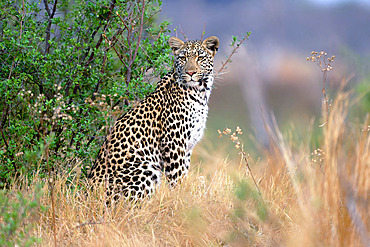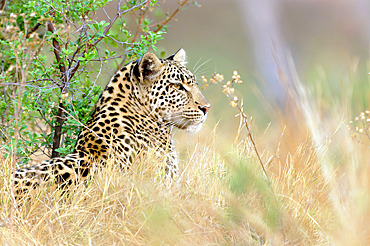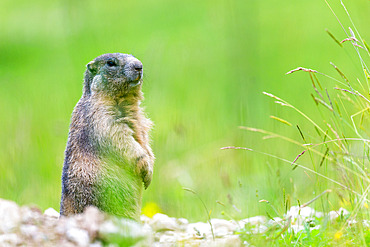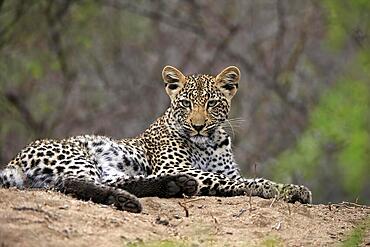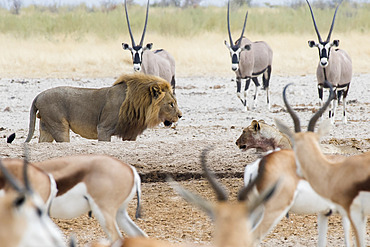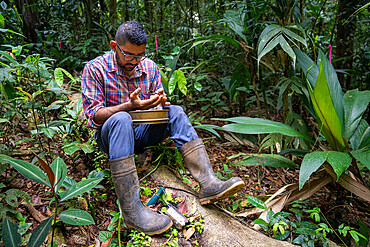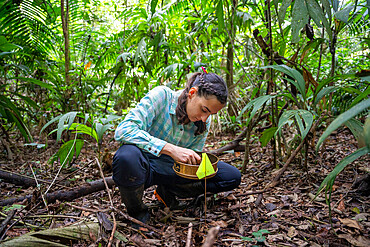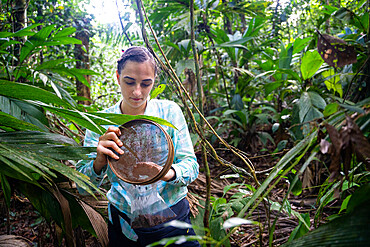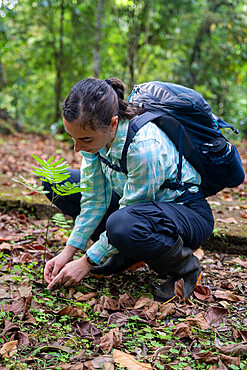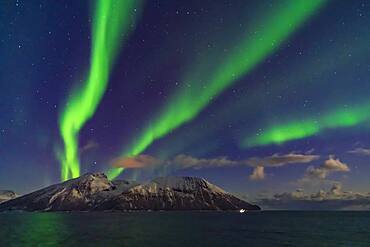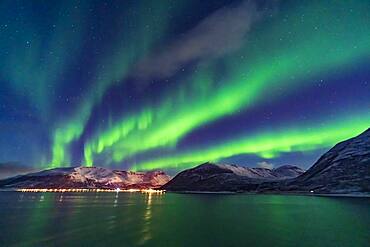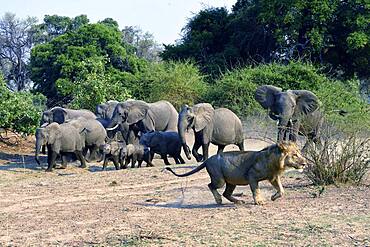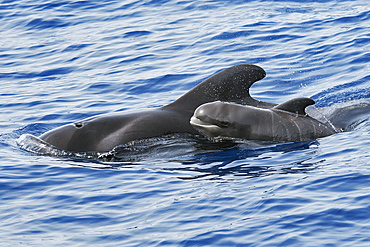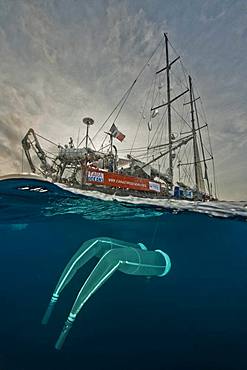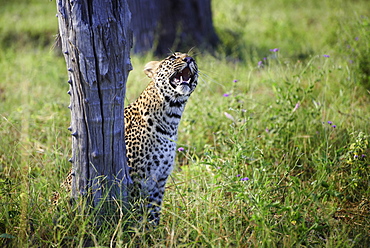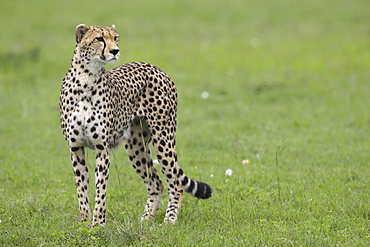Recent searches
Loading...
860-292210 - Orca (Orcinus orca) group off Mayotte. During the short passage off Mayotte, this group of killer whales was observed devouring a Mobula ray and a large tiger shark.
860-292159 - Leopard (Panthera pardus) observing a herd of greater kudu in Botswana's Savuti reserve.
860-292158 - Leopard (Panthera pardus) observing a herd of greater kudu in Botswana's Savuti reserve.
860-292012 - Alpine Marmot (Marmota marmota) standing on the grass on the mountain, Alps, Austria
832-403309 - Leopard (Panthera pardus), adult, observed, alert, lying, on ground, Sabi Sand Game Reserve, Kruger National Park, South Africa, Africa
832-403308 - Leopard (Panthera pardus), adult, observed, alert, portrait, Sabi Sand Game Reserve, Kruger National Park, South Africa, Africa
832-403307 - Leopard (Panthera pardus), adult, observed, alert, lying, on ground, Sabi Sand Game Reserve, Kruger National Park, South Africa, Africa
860-291512 - Lions (Panthera leo) between Oryx gazelles (Oryx gazella) and Springboks (Antidorcas marsupialis), Etosha National Park, Namibia
860-291510 - Lion (Panthera leo) male in front of Gemsbok (Oryx gazella), Etosha National Park, Namibia
860-291462 - CBD (cannabidiol) producer or cannabiculturist monitoring with a specific magnifying glass the development of trichomes before harvesting hemp heads, Montagny, France
860-291461 - CBD (cannabidiol) producer or cannabiculturist monitoring with a specific magnifying glass the development of trichomes before harvesting hemp heads, Montagny, France
860-291417 - Research assistant working on nitrogen exchanges between bacteria and the roots of legumes in the tropical forest of the "La Selva" research station in Puerto Viejo de Sarapiqui, Costa Rica
860-291415 - 27-year-old researcher working on nitrogen exchange between bacteria and the roots of legumes in the rainforest at the "La Selva" research station in Puerto Viejo de Sarapiqui, Costa Rica
860-291409 - 27-year-old researcher working on nitrogen exchange between bacteria and the roots of legumes in the rainforest at the "La Selva" research station in Puerto Viejo de Sarapiqui, Costa Rica
860-291410 - 27-year-old researcher working on nitrogen exchange between bacteria and the roots of legumes in the rainforest at the "La Selva" research station in Puerto Viejo de Sarapiqui, Costa Rica
860-291406 - 27-year-old researcher in front of the Pracaxi legume (Pentaclethra macroloba) at the "La Selva" research station in Puerto Viejo de Sarapiqui, Costa Rica
860-290761 - European Wolf (Canis lupus lupus) in the snow, Pyrenees, France
1348-5309 - The evolution of the brachiopod Eocelia. The horizontal bars indicate the observed range of rib strength among fossilized finds.
860-289948 - Alpine ibex (Capra ibex) overhanging, Ubaye, Alpes de Haute Provence, France
860-289927 - Girl observing birds through binoculars, etang de la Veronne, Etangs du Malsaucy et de la Veronne trail, Sermamagny, Territoire de Belfort, France
1350-75 - A fine display of aurora in curtains across the north, October 19, 2019, observed from the upper Deck 9 of the ms Trollfjord on the southbound voyage north of Tromsø along the Norwegian coast. Illumination is partly from the waning gibbous Moon.
1350-45 - This is the central area of Cygnus and its bright Milky Way starcloud surrounded by red nebulosity. At left is the star Sadr (gamma Cygni) with the complex of nebulosity catalogued as IC 1318. At centre is the distinct Crescent Nebula, NGC 6888, a expanding nebula created by winds from a hot Wolf-Rayet star. At bottom left is the star cluster Messier 29, though looking a little lost in the rich starfields here. At top is the cluster IC 1311, looking more obvious than M29 but not observed visually and included in the NGC catalog. Odd. At far right are the large and loose star clusters NGC 6883 and NGC 6871, the latter an obvious binocular sight. To the left of Sadr is the small cluster NGC 6910. The dark nebulas B145 and LDN 862 are at right. The small emission nebula at bottom is Sharpless 2-104.
1350-76 - A fine display of aurora in curtains across the north, October 19, 2019, observed from the upper Deck 9 of the ms Trollfjord on the southbound voyage north of Tromsø along the Norwegian coast. Illumination is partly from the waning gibbous Moon.
860-288865 - African savannah elephants (Loxodonta africana africana), the lion finally releases in front of the charge of the right elephant, South Luangwa NP, Zambia
860-288864 - African savannah elephants (Loxodonta africana africana), the lion eventually stands up before the load of the right elephant, South Luangwa NP, Zambia
1116-46494 - The Setting Sun Observed From The Kona Coast, Kona, Island Of Hawaii, Hawaii, United States Of America
860-287776 - Young Black Rat (Rattus rattus) climbed in a viburnum near a rural house, Auvergne, France.
860-287775 - Young black rat (Rattus rattus) on bird feeder near a rural house, Auvergne, France. Other French name: Rat des greniers or Rat des champs
860-288200 - Calderón (Globicephala macrorhynchus). Breeding with an adult, probably his mother swimming on the surface. The fetal lines of the newborn can be perfectly observed. Tenerife, Canary Islands.
939-42 - Whale shark (Rhincodon typus) with rainbow runner observed by a tourist and guide in Honda Bay, Palawan, The Philippines, Southeast Asia, Asia
860-287657 - Tourists watching the gushing of a geyser: hot water coming out of the Strokkur geyser, Geysir site, Iceland.
860-287670 - Cheetah (Acinonyx jubatus), observed by wildebeest, Masai-Mara National Reserve, Kenya
860-287450 - Tara Oceans Expeditions - May 2011. Tara with deployed plancton nets. On "station", the boat is drifting without engine or sails. Tara Oceans, a unique expedition: Tara Oceans is the very first attempt to make a global study of marine plankton, a form of sea life that includes organisms as small as viruses and bacterias, and as big as medusas. Our goal is to better understand planktonic ecosystems by exploring the countless species, learning about interactions among them and with their environment. Marine plankton is the only ecosystem that is almost continuous over the surface of the Earth. Studying plankton is like taking the pulse of our planet. Recently, scientists have discovered the great importance of plankton for the climate: populations of plankton are affected very rapidly by variations in climate. But in turn they can influence the climate by modifying the absorption of carbon. In a context of rapid physico-chemical changes, for example the acidification observed today in the world's oceans, it is urgent to understand and predict the evolution of these particular ecosystems. Finally, plankton is an astonishing way of going back in time ? a prime source of fossils. Over the eons, plankton has created several hundred meters of sediment on the ocean floors. This allows us to go back in time, to the first oceans on Earth, and better understand the history of our biosphere. More than 12 fields of research are involved in the project, which will bring together an international team of oceanographers, ecologists, biologists, geneticists, and physicists from prestigious laboratories headed by Eric Karsenti of the European Molecular Biology Laboratory. Galapagos
1116-40063 - A Reef Manta Ray (Mobula (formerly Manta) alfredi) hovers over a reef cleaning station off the Kona Coast, the Big Island, Hawaii, USA. This particular female manta with a missing left cephalic lobe has been observed by divers and snorkelers at Kona since
860-285477 - Grizzly bear cub standing on a riverside in Canada
860-282080 - Stag Red Deer standing among hinds in autumn, GB
860-286500 - Grey wolf in wetlands in Eastern Finland
860-285894 - Leopard observing Guinea fowl on tree, Botswana Okavango
860-283193 - Kingfisher perched on a branch of Hawthorn in autumn, GB
860-286501 - Grey wolf in wetlands in Eastern Finland
860-282639 - Straw-coloured fruit bat observatory, Kasanka NP Zambia
860-285478 - Grizzly bear cub sitting next to a stream in Canada
979-8689 - Polar bear (Ursus maritimus) observed by National Geographic Explorer along the northwestern coast of Spitsbergen in the Svalbard Archipelago, Norway
920-2681 - Goliath grouper (Epinephelus itajara) observed by diver, Molasses Reef, Key Largo, Florida, United States of America, North America
You reached the end of search results

